Rajasthan in January is perfect for the adventurous traveler. This boutique hotel on the fringes of the Thar Desert, gives an idea of seclusion and pure hedonism. I say that as I looked at the images and the promised adventures/experiences that were being offered. I didn’t need much convincing as we flew over to Jodhpur (the closest airport – 300 kms away) to visit the Suryagarh Hotel in Jaisalmer.
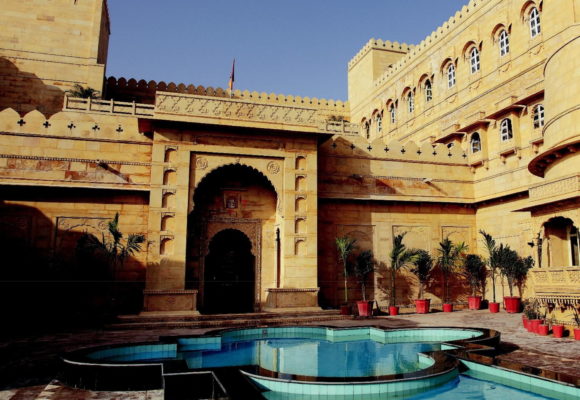
It is easily one of India’s most appealing destinations, but it has no air space as yet, perhaps in the near future. Touted as the most magical desert city in Rajasthan, Jaisalmer was also the stronghold on the great spice route from Persia and Afghanistan. Broadly speaking Jaisalmer has arid weather all year round, winters being cold, and summers being hot and dry. The winter months (Nov-Feb) definitely allow for more sightseeing and adventure.
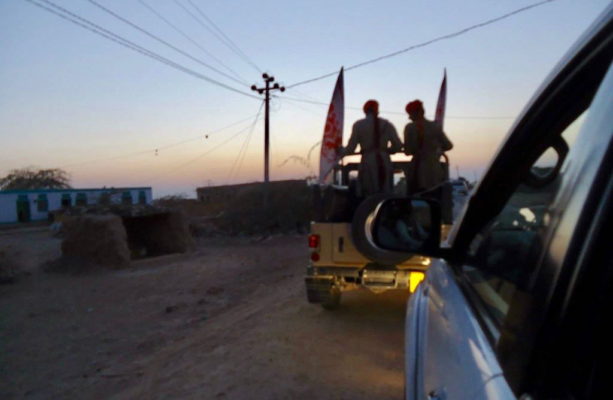
So, there we were driving with the wind, as our able chauffeur Upendra, guided the car across the landscape (the roads are in amazing shape) getting us to our destination – Suryagarh. A little bit about the owners of the said property, the Shekhawats are a business family who have ventured into the hospitality sector, already having had success with the Laxmi Niwas Palace in Bikaner.
We were in for a surprise when a road escort was sent for us 6 km away from the hotel. An amazing sight this, as the guards stood upright, bracing themselves against the strong wind, supporting flags on either side of the jeep, and heralded us all the way alongside the setting sun. As we drove into the property, the staff greeted us with a drum roll as chandan tikka was applied, rose petals were showered, and Rajasthani folk songs belted through the air. An auspicious welcome indeed!
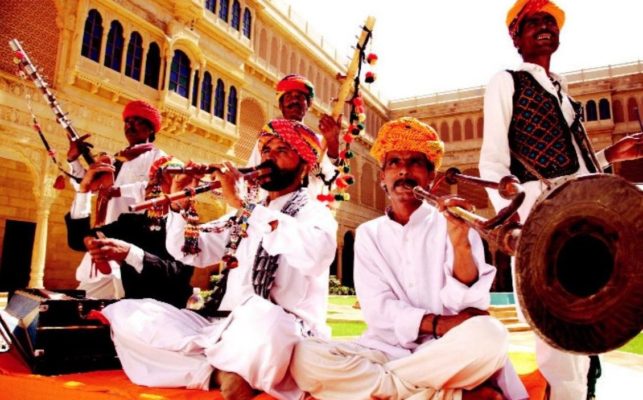
As we bonded with Alex, the Golden Retriever who is possibly the mascot to the hotel being the VP Karan Singh’s favorite, the sheer magnificence of the fort loomed large. The Champa Garden and the Yoga Garden flanked the main premises. The lobby welcomed us with its royal ambience, walls lined with history and weaponry, and a stuffed tiger graced the lounge.
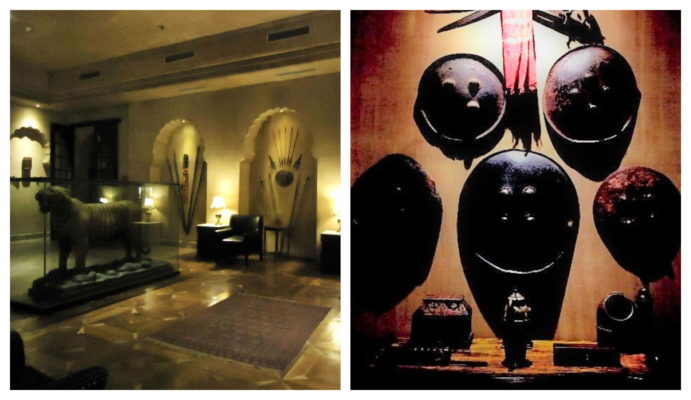
The inner central courtyard seemed to breathe life into the fort, lit with lights as the stained glass of the windows shone through. Even the cold couldn’t dampen our spirits as we entered the regal elevators, to move towards our suites. Carved filigree work on the jaalis, the jharokhas, and the paraphernalia that lined the walls gave it the palace feel.
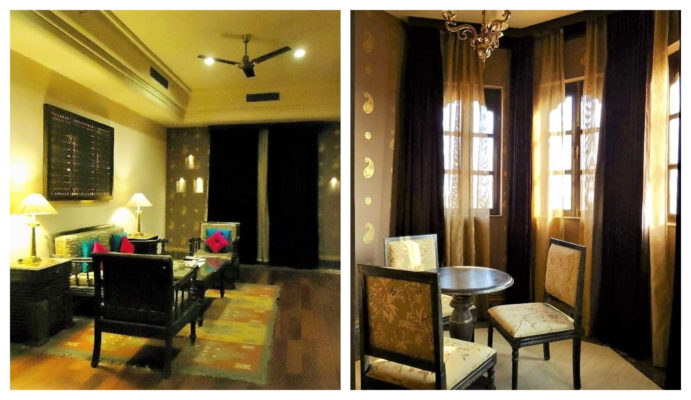
Our suite opened to a large sitting room, with an attached breakfast room. The bedroom boasted of all the amenities that one imagined. Truly the contemporary coupled with Rajasthani splendor. Bundled in our woolens we faced our first evening as we went to experience Rajasthani folk music/dance at the Tulsi Angan. Dinner was served at Draksh – the Bar, so that we could meet the dapper Hotel Manager Nakul Hada in an uninterrupted manner. As we relished the food we knew we had already met with the able chef Sachit, the youngest we had ever known in the business.
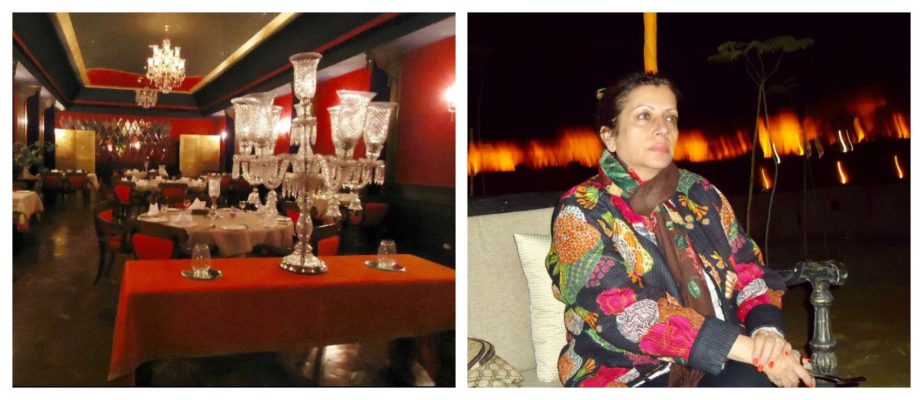
An early start to day 2; we were not going to take any chances of missing anything on the itinerary. We were pleasantly greeted with the “Halwai Breakfast” served at Nosh. Known to be a Suryagarh original, the buffet ranged from kachoris, mirchi ke bhajias, chaat and a plethora of mithais. With chutneys in wine glasses and juices to suit the colored petals all strewn among the tableware, we just had to congratulate the in-house Halwai Gatta Ram.
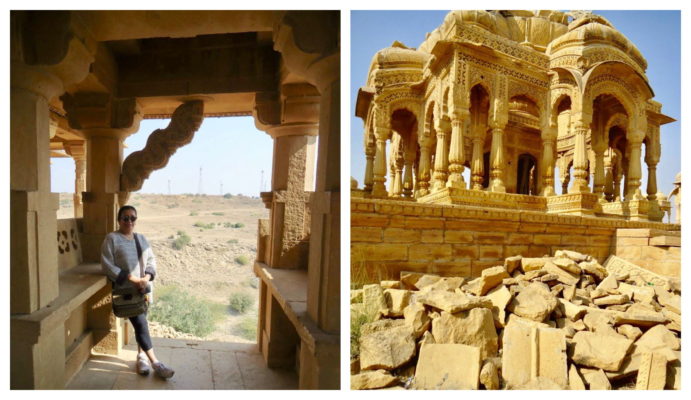
Jackets and sunhats on, we proceeded to the 1100 year old Jain Temple in Ludharva that used to be the capital of Jaisalmer. A sight to behold here is the immaculately carved Kalpavriksh (celestial tree of life.) Jaisalmer is famous for its havelis and temples and the exquisite architecture among the current ruins bears witness to the fact.
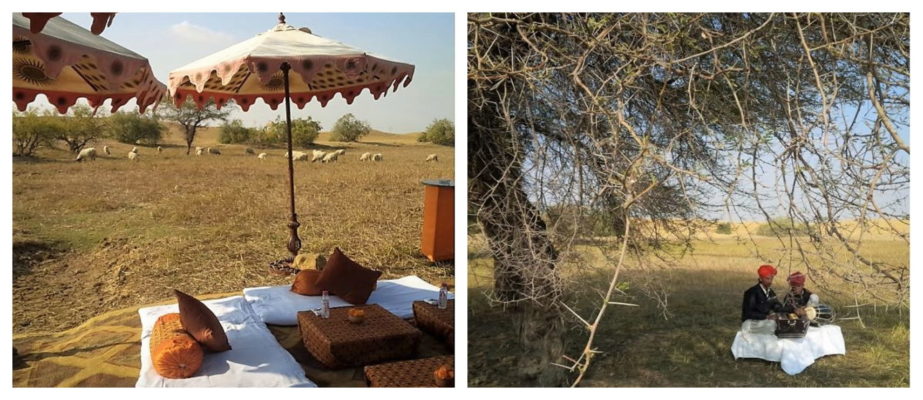
Suryagarh is situated in the dessert, so to plan a picnic a few minutes away is quite the rhetoric. But strangely, after a short drive we were looking at sheep grazing on green pastures (a dessert oasis perhaps), cows and herons all keeping company side by side along a little watering hole. Near a bramble tree we also sighted singers, charcoal pits replete with long stemmed glasses, parasols (to keep us in the shade) and orange turbaned waiters.
The afternoon promised to be decadent. And after experiencing that peaceful calm, there was only one thing to do to support it – indulgence at the Rait Spa. Named after the sand that is omnipresent everywhere, the spa proves to be a destination in itself, offering exotic elixirs and aromatic oils in their treatments that follow their culture and traditions. Keeping in mind the inner and outer well being I chose the Abhayra and the Stone treatments.
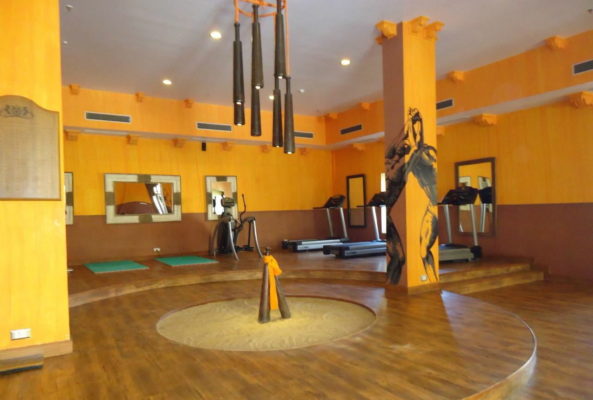
Just adjacent to the Spa are two other recreational facilities, consisting of the Indoor Pool (Neel) and the state-of-the-art Cybex Gym (Akhara). With all this available could yoga be far behind? Sivananda yoga, which is a slow form of Hatha yoga, is practiced here.
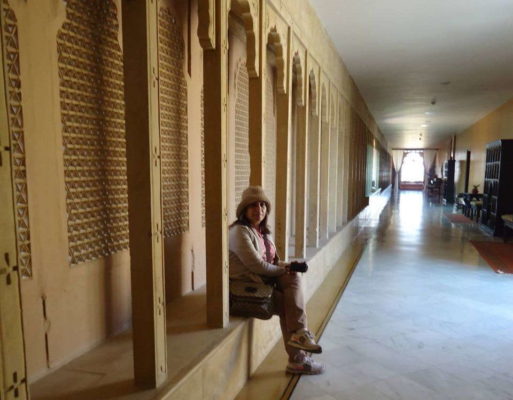
By the setting sun in the courtyard I hear a deep guttural voice resounding in the corridors and I find out that it is the voice of Kaki (named the songstress of the Thar), who sings ballads of love that resound all though the fortress. As I pass her I see young Salim, the magician, showing his art with panache and style. I find that there is one more person I should try and that is the in-house Panditji, who predicts with his own brand of astrology, astronomy and palm reading.
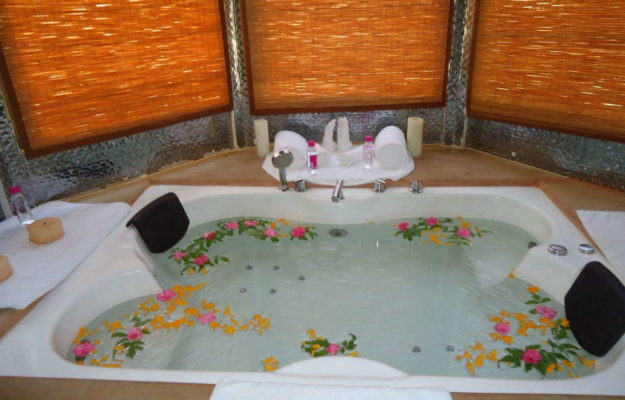
A long soak in the rose petalled tub, I dream of the next meal to be set in the most idyllic setting, by the lake garden. A perfect conclusion to a magical day. A Rajasthani thali awaited us among the silent waters, the only sound being that of Mehboob Khan and his family of Manganiyars (actually artists of international repute). But this did not end the day, as the Chudail Trail awaited us. Of course designed by Suryagarh, the hotel takes its guests into the nooks and crannies of all the places that the Chudail is rumored to inhabit. The journey starts at the midnight hour, to the Shiv Mandir, onward to the Shamshan Ghat, to the burial grounds leading to Jaziya Talao to the abandoned ghost town of Kuldhara. Clearly the most exciting of the expeditions offered by Suryagarh.
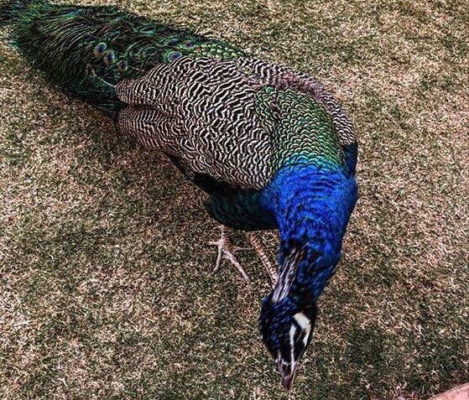
On day 3 we awoke to the strains of Algoza (the double flute). Groggy but prepared, we were curious about a breakfast with the peacocks. Deep into the desert at an hour before dawn is when the breakfast of eggs and mash is served. Cognac and cigars complete the experience. What follows is a little shepherd who whistles to alert the peacocks, that is when all of them swoop in with their striking plumage, to feed as the sun begins to rise at the Khaba Fort. A sight to behold!
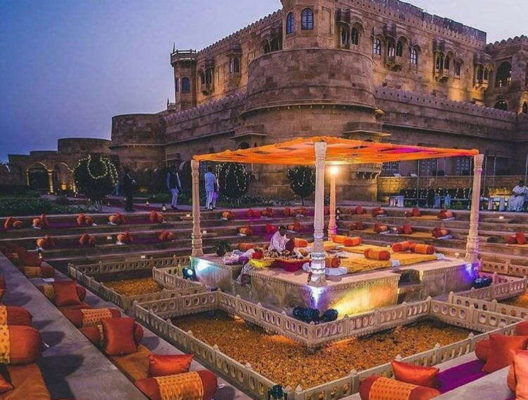
All this excitement had made me wonder if marriages were possible in this amazing landscape of experiences. A recce brought all this to the fore. Already in existence were a marriage courtyard and garden, enclosing a traditional Bara Dari pavilion, a lakeside garden for dinners and parties, a bawdi styled like a traditional step-well used as an amphitheatre for musical evenings, a mehndi terrace, ideal for smaller occasions and many more places that would equip a wedding experience.
Other activities that kept us intrigued were camel safaris to some interesting locales, and dhanurvidhya (archery), a friendly combat. Buddhist chanting and meditation are actively encouraged. In the courtyard is also a cards and billiards room (Taash).
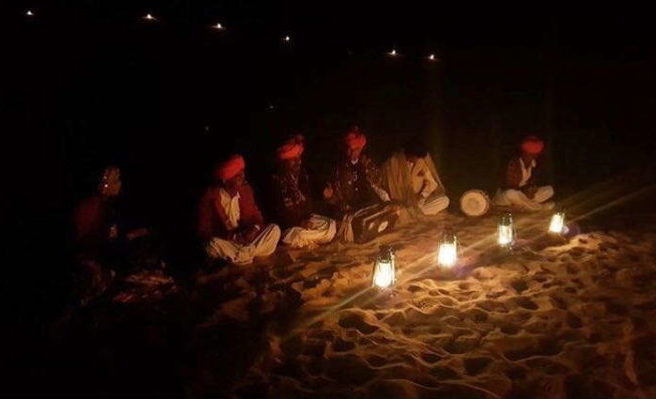
The last evening of the weekend turned out to be the most magical. We drove 20 minutes towards our “Dinner on the Dunes”. Lined with tea lights, the way led to our very own bespoke setting. A bonfire crackled as the chef whetted our appetites with the ‘nomadic hunt menu’ of quail, lamb and rabbit as the folk singers regaled us with their song and dance. With a star lit sky above and a carpet of sand below we wished that time would stand still…
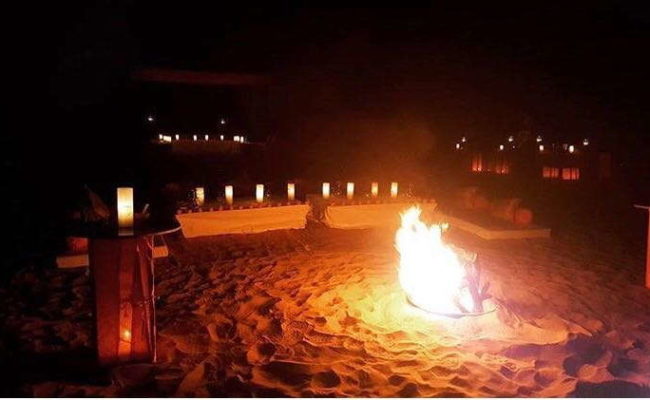
Previously published in the Sindhian
Image Credits : Maya Lalchandani, Suryagarh Instagram (@suryagarh)



